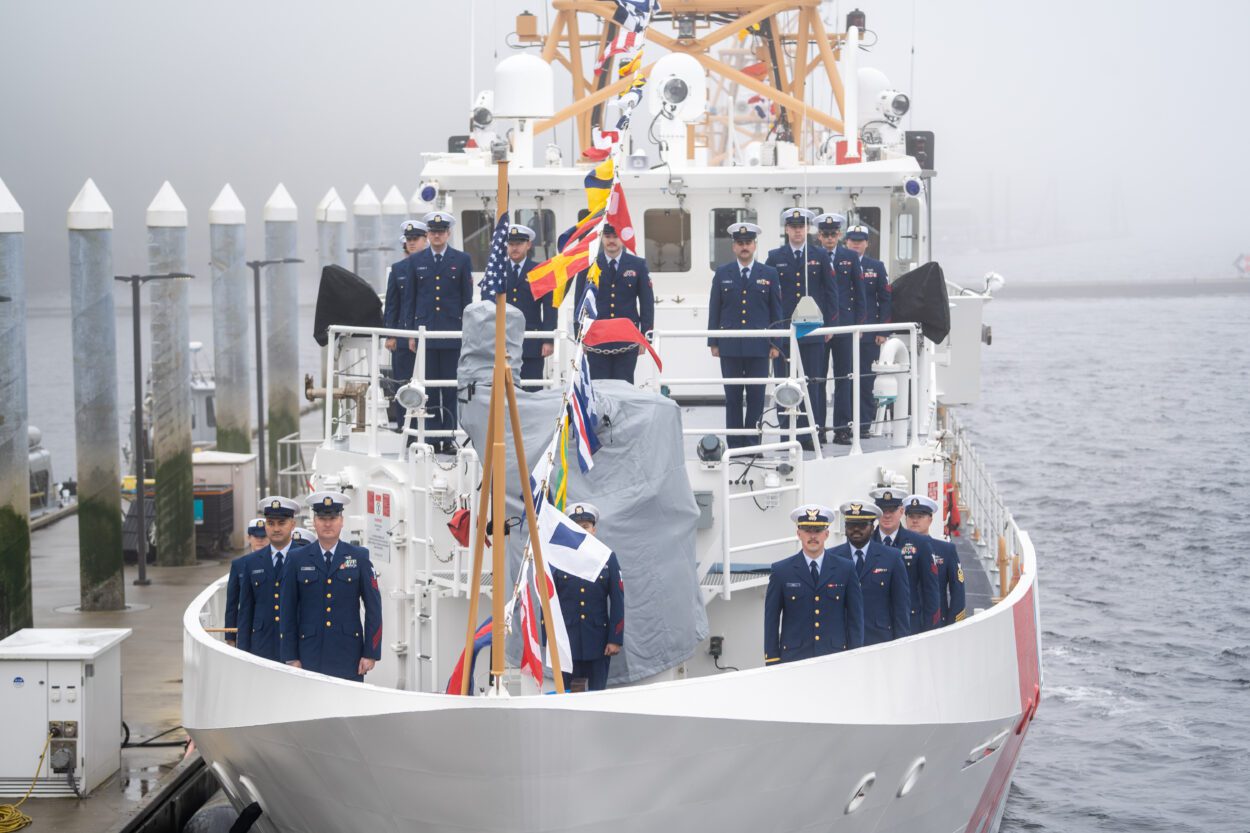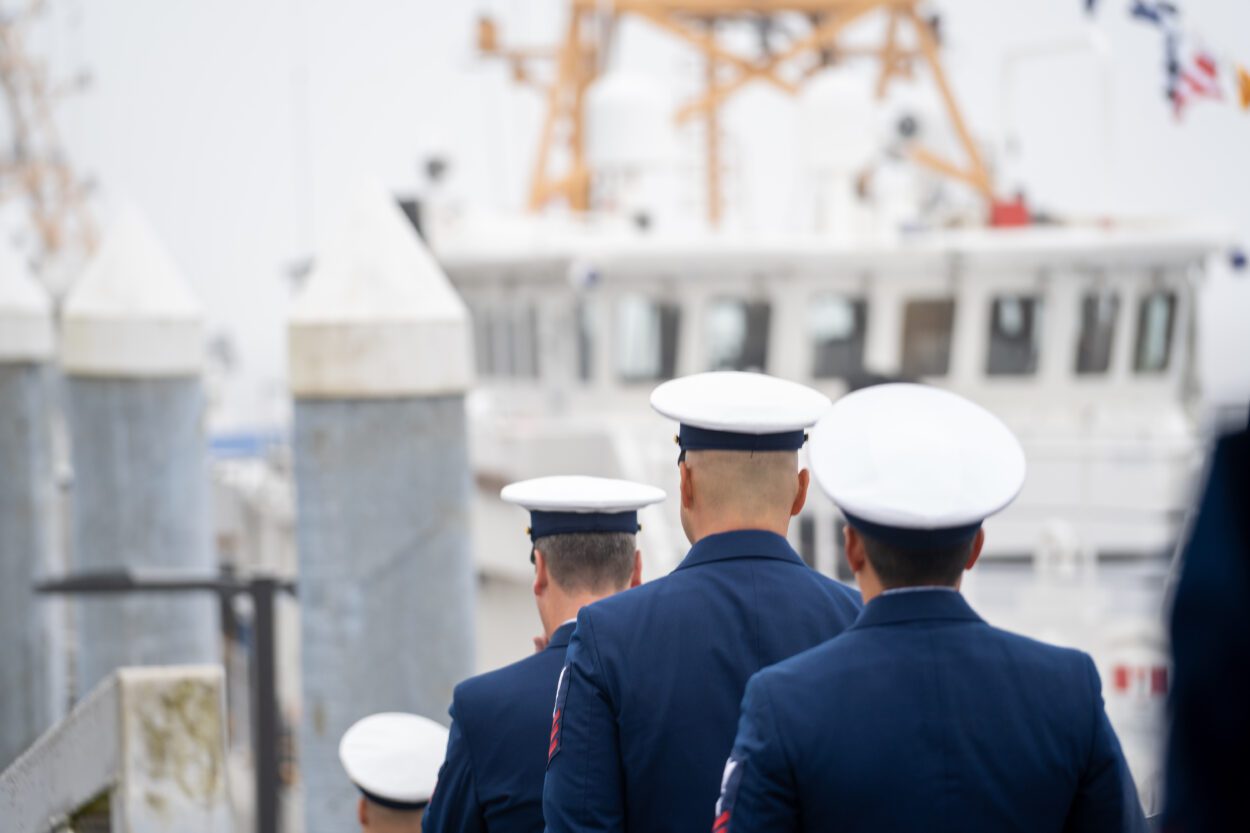
A new Coast Guard cutter officially entered service on Wednesday after a commissioning ceremony in Ketchikan. The 154-foot Fast Response Cutter Douglas Denman is slated to eventually be homeported in Sitka.
Coast Guard members, their families and other invited guests gathered on Base Ketchikan’s pier for the occasion. The Ketchikan High School wind ensemble welcomed attendees with a rendition of John Philip Sousa’s march, “The Washington Post.”
The Douglas Denman’s second-in-command, Executive Officer Lt. Junior Grade Alicen Re, underscored the significance of the event.
“Commissioning a cutter is one of the most important traditional milestones in the life of a cutter, as it represents the ship’s readiness to conduct Coast Guard operations and her entry into active service,” Re said.

The cutter, like others in its class, is named after an enlisted member of the Coast Guard who demonstrated exceptional heroism.
During the World War II Battle of Guadalcanal, Coast Guard Coxswain Douglas Denman remained at his station despite his injuries when his ship was struck by bombs from enemy aircraft. When the order came to abandon ship, Denman carried two of his injured shipmates to the bow and tossed life jackets to comrades struggling to swim in oily water.
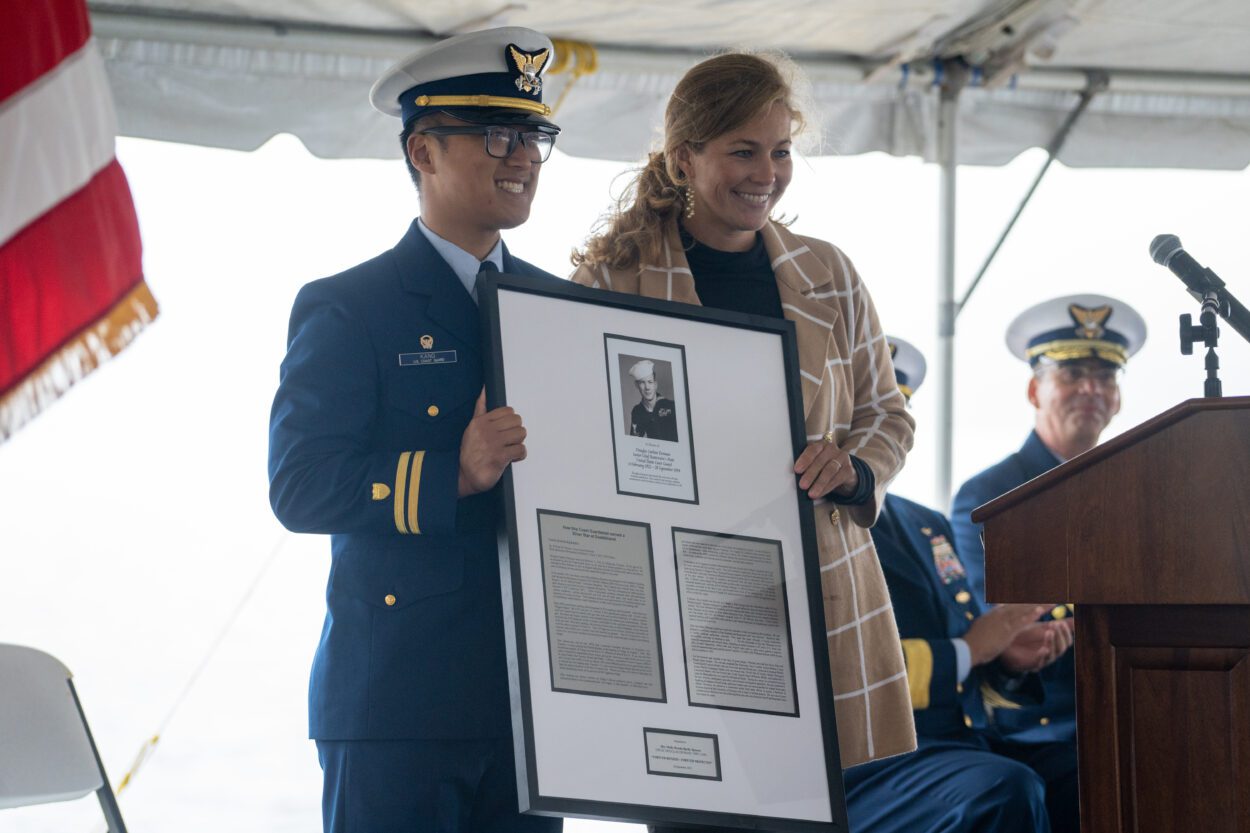
Approximately two thirds of the 150 crew aboard the destroyer Edmund Colhoun, including Denman, survived the sinking. He was awarded a Purple Heart and a Silver Star for his valor and retired after two decades in the service as a boatswain’s mate.
Several of Denman’s children and grandchildren made the trip from Georgia to Ketchikan to mark the occasion. Denman’s granddaughter, Molly Brooks Barth, was named the ship’s ceremonial sponsor. She offered well-wishes to the crew at the ceremony.
“This is a tremendous privilege for me, and I’m deeply honored to be representing the Denman family here today,” she said. “I truly believe that my grandfather’s spirit will be with this crew and all of the crews that will serve aboard it in the years to come.”
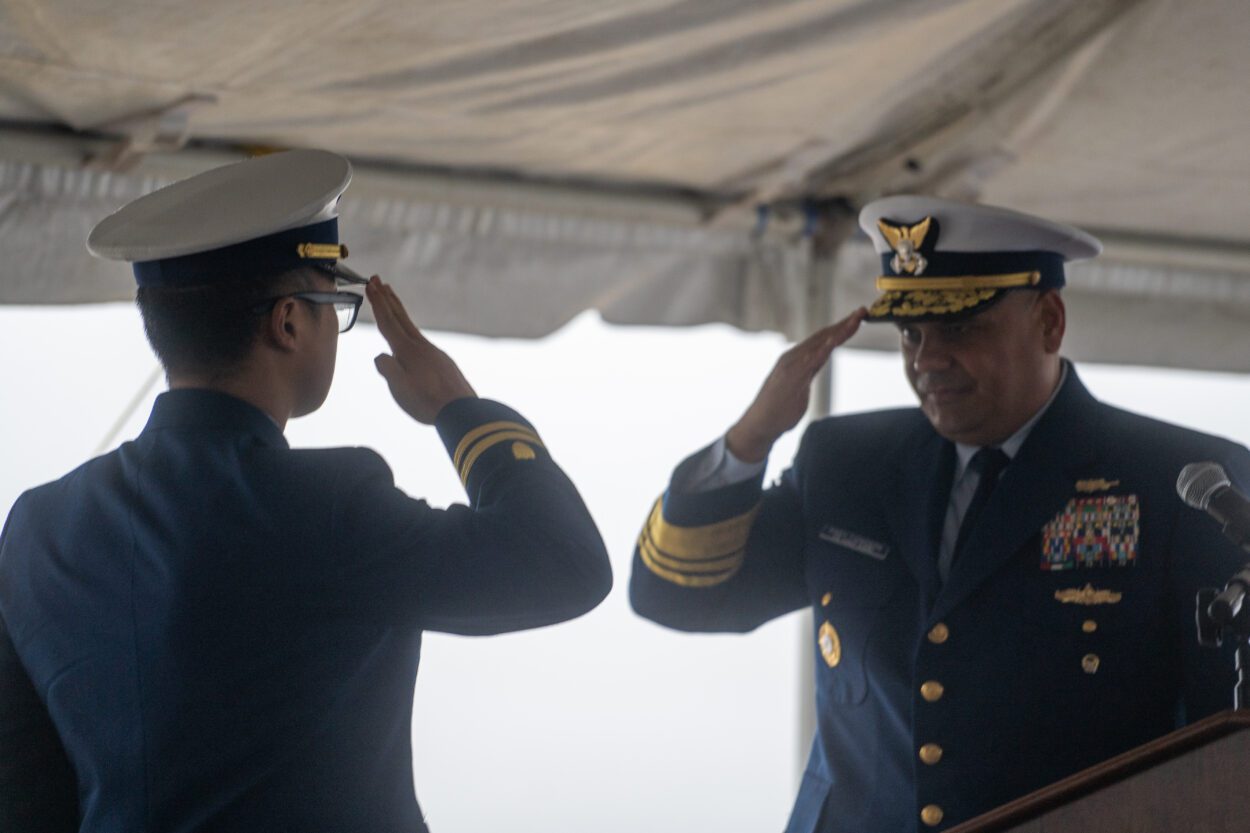
Vice Admiral Andrew Tiongson, the commander for all Coast Guard operations in the Pacific, formally began the cutter’s Coast Guard service.
“For the president of the United States, I hereby place United States Coast Guard Cutter Douglas Denman in commission,” he said. “May God bless and guide this cutter in all who sail on her.”
The Douglas Denman’s commanding officer, Lt. Paul Kang, thanked the vessel’s 24 crew members for their dedication. He said they’d endured long, difficult days in the months before the commissioning, including a 35-day trip from Key West to Ketchikan.
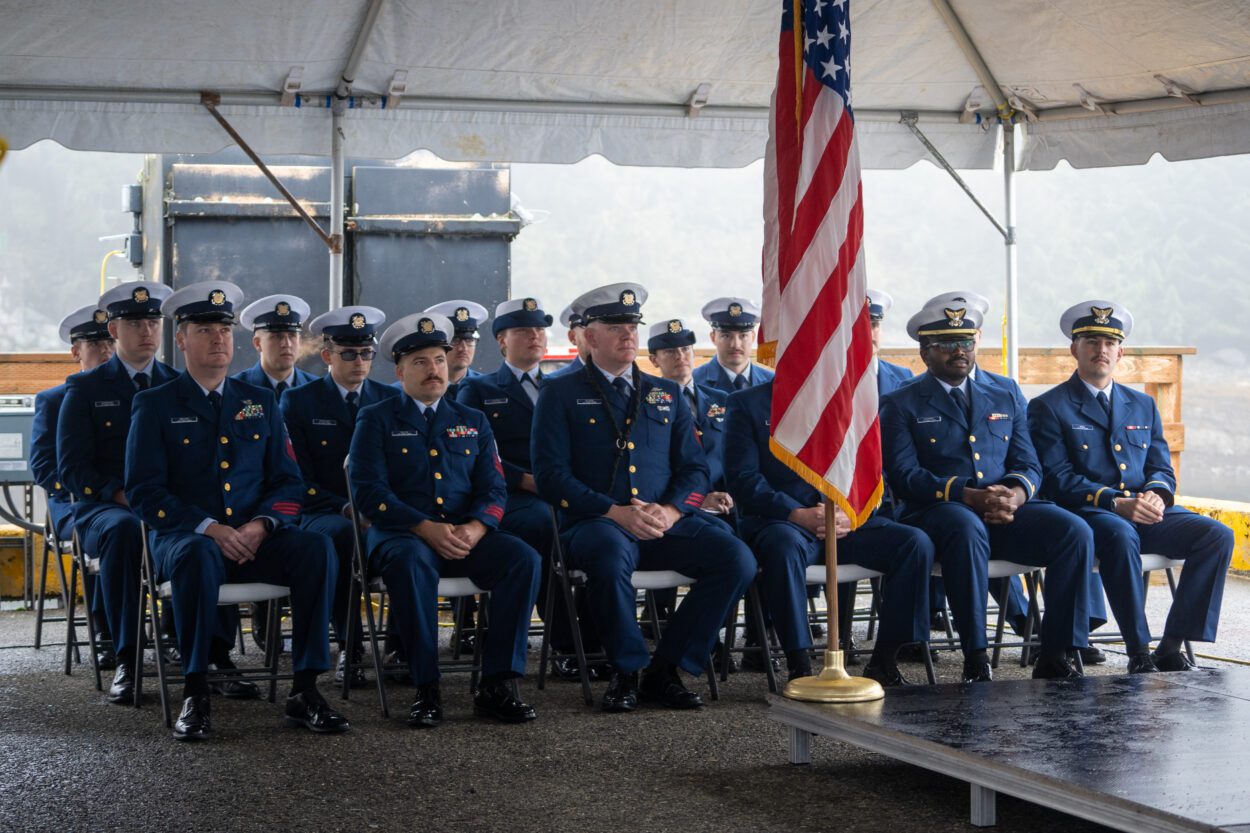
“This crew has truly seen it all. There’s so much more to come. I cannot be prouder of how much we have accomplished together. I remain so humbled and honored to be your commanding officer,” he said. “As you begin our next chapter operating in unforgiving Alaskan waters, I’m confident that we will continue to grow as a crew and a family and earn our title of ‘Grit of the North.’ Thank you, God bless America, Semper Paratus, and go Douglas Denman.”
Aboard the ship, that motto — Grit of the North — is posted above doorways and on the ship’s crest.
“One of the really cool parts about being the first crew — we were able to design the crest ourselves,” Re said during a tour of the vessel.
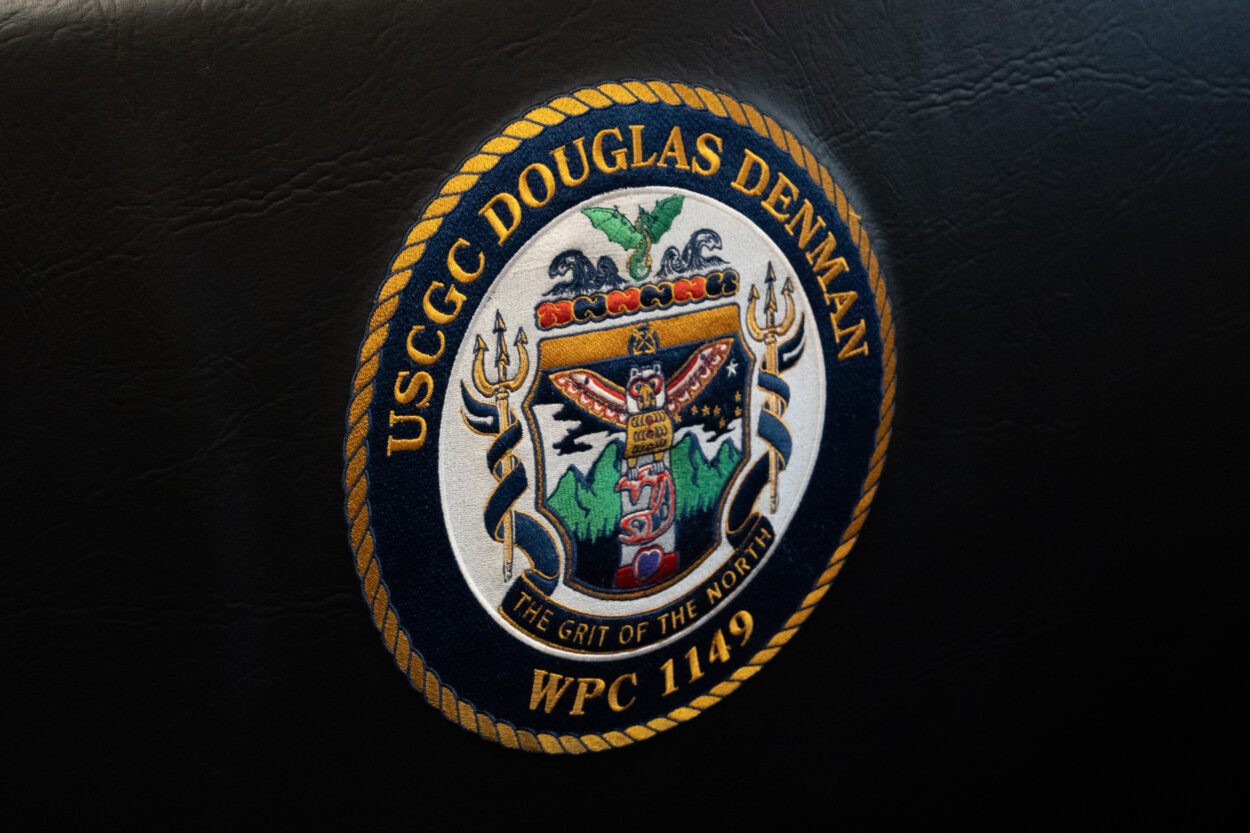
The circular crest created in collaboration with a Ketchikan graphic designer features a totem pole topped by an eagle holding a salmon. Behind that are the mountains of the ship’s eventual home in Sitka. A pair of tridents on either side of the crest honor lives lost at sea. There’s Denman’s Purple Heart and Silver Star, plus the blue-and-gold Big Dipper, symbolizing Alaska.
And there’s another Alaska connection, though it’s a bit of a coincidence: the Douglas Denman is the 49th cutter in its class to enter Coast Guard service, so it’s fitting that it’ll serve in the 49th state.
The new cutter has some advantages over the other two stationed in Ketchikan — an upgraded bow thruster, a new radar system, and a forward-looking infrared camera. Re says that could prove useful for the occasional night boarding.
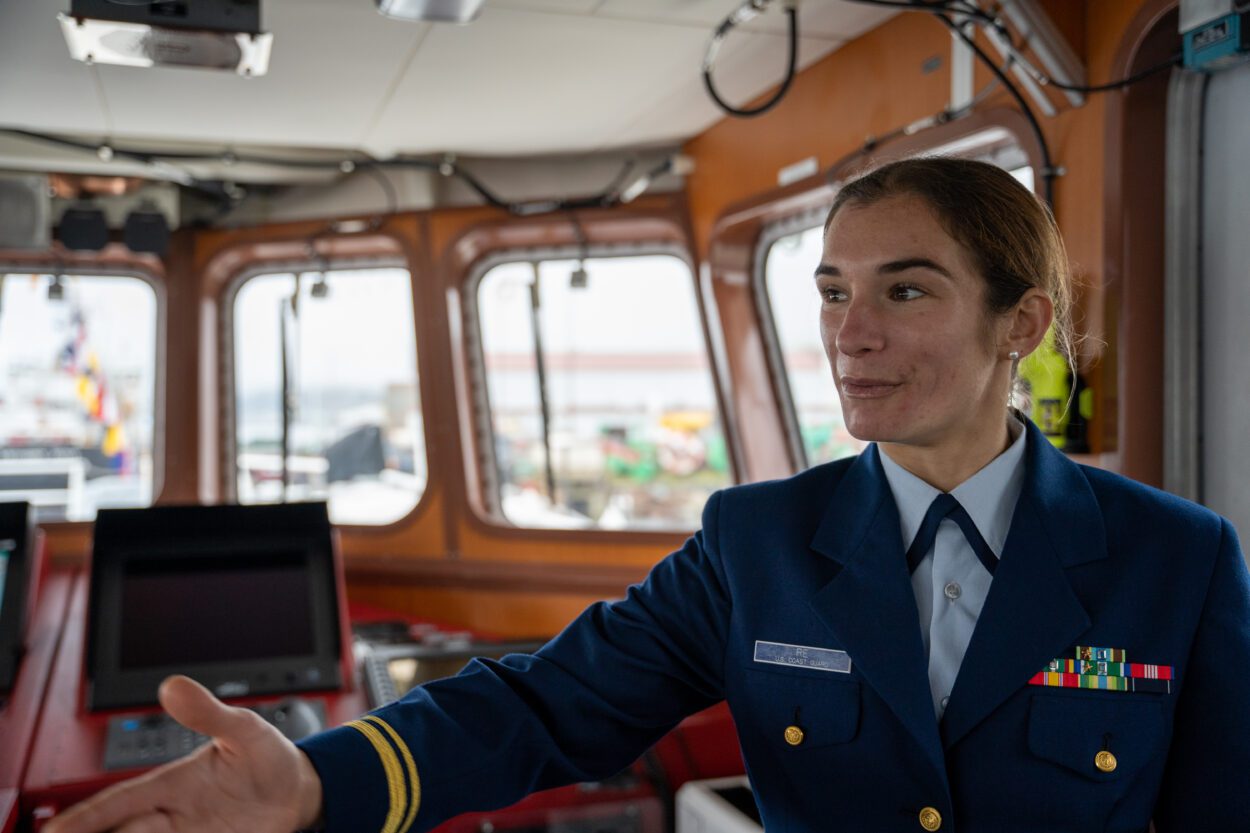
“It’s kind of neat — at nighttime, we can pretty much see anything as clear as we can in the daytime,” she said.
Re says the Douglas Denman can speed through the water at upwards of 35 miles per hour in favorable conditions. A smaller 26-foot boat used for boardings that can be launched from the back of the cutter can do upwards of 45 miles per hour.
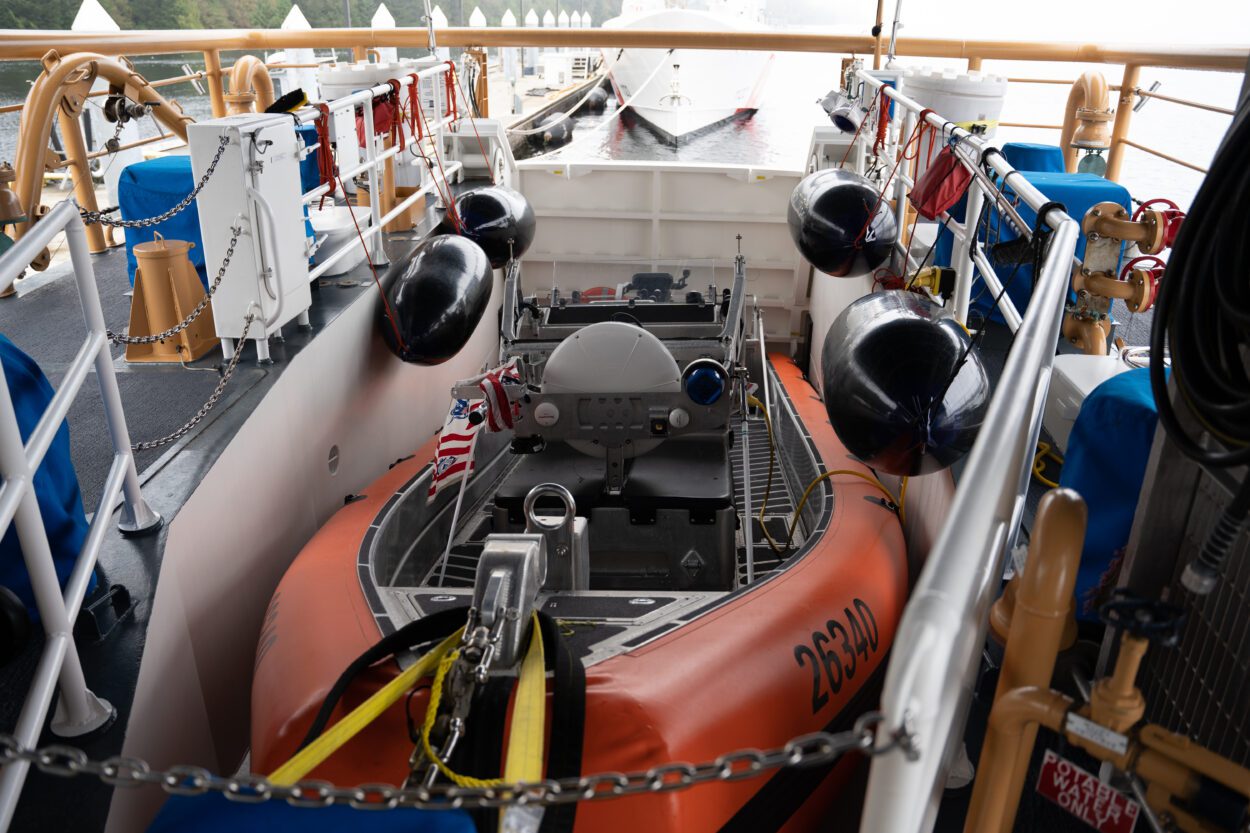
“Essentially, the cutter is just a driving platform for the small boat. The small boat is actually what ends up doing all the operations,” she said.
Re says she’s looking forward to getting underway for the Douglas Denman’s first missions as a commissioned vessel. It’ll be tasked with fisheries enforcement, search and rescue, national security and upholding federal law in Southeast Alaska.
